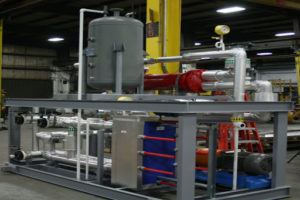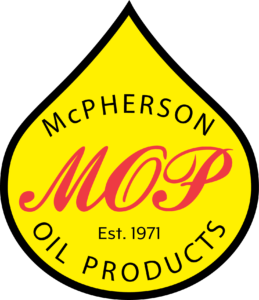Water Contamination in Heat Transfer Systems
09 Mar 2020, Posted by in General Water in a heat transfer system can be potentially harmful to equipment and present a major safety hazard to maintenance personnel.
Water in a heat transfer system can be potentially harmful to equipment and present a major safety hazard to maintenance personnel.
Here’s why:
When water residing at a low point in a system reaches its boiling point and flashes to steam, its volume increases- suddenly- by more than 1,000 times. The displaced fluid is quickly forced into the expansion tank and out the vent. Hot fluid and steam spurting out of a vent can cause serious injury, fires, and in some systems, the rapid expansion can cause a rupture of system piping and seals.
Here are some tips to help you detect water contamination in heat transfer systems:
Take care to monitor sudden changes in a system – particularly during start-up— whether it be in pump cavitation, increased expansion-tank volume, unusual sounds or increased pressure, as these indicators could signify that there is water in the system. High levels of water can be easily observed at the bottom of decanted oil samples. Small water infiltrations of less than 300 to 400 ppm will manifest as pump pressure fluctuations (cavitation). Fluid temperature is lowest at the pump suction, and that temperature determines whether the water is liquid or gas in the system. If detected fluctuations begin suddenly while the system is heating up, it signifies a low level of water in the system.
To remove water from heat transfer systems:
Drain as much free-liquid as possible from the system low points. After most of the free water has been removed, remaining water can be “steamed off” by running the system at about 107 °C (225°F) with all vents and the expansion tank warm-up valve open.
To ensure that all water has been removed, maintain the expansion-tank temperature above 100 °C (212°F) to prevent vapor condensation, and add nitrogen to the expansion tank headspace in order to sweep the water vapor from the tank.
Once the system is stable, perform a water check at the low-point drains in the expansion tank.
Need additional help? We have partnered with Industrial Lubrication Services to help our customers with services high-velocity flushing and vacuum dehydration for lube oil systems when needed. Together with McPherson Oil, ILS consultants and technicians identify the root cause of lubrication related equipment failures and then work hand-in-hand with you and your team to implement the necessary procedures, processes or products to avoid a reoccurrence. Through a process of filtering and cleaning contaminated lubricants and oils onsite, we can cut our customers’ costs by extending the life of the product and eliminating downtime. Through these industry-proven processes, we can bring oil products back to ISO specs for a margin of the costs. This process is not just limited to oil.
Ready to get started? Contact us today!
*Article courtesy of ExxonMobil’s Club Mobil Industrial’s Tech Help Desk, 2014.
